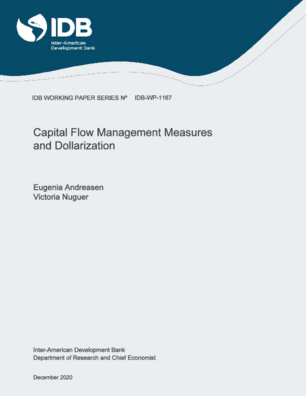Capital Flow Management Measures and Dollarization
Date issued
Dec 2020
Subject
Inflation Targeting;
Monetary Policy;
Foreign Exchange;
Capital Flow;
Financial System;
Capital Control
JEL code
G21 - Banks • Depository Institutions • Micro Finance Institutions • Mortgages;
E58 - Central Banks and Their Policies;
E44 - Financial Markets and the Macroeconomy;
E65 - Studies of Particular Policy Episodes
Country
Peru
Category
Working Papers
This paper studies from an empirical and theoretical perspective the systemic and bank-level effects of imposing reserve requirements (RR) in foreign currency in an economy with a heavily dollarized financial system. The paper empirically characterizes banks responses to the RR carried out by the Peruvian Central Bank since 2008 with the objective of stabilizing the financial market and meeting its policy targets. The results suggest that the RR is effective in reducing the overall level of credit in the economy and that banks response in terms of credit and deposits is very heterogeneous depending on their ex ante preference for foreign funding ratio, i.e., the ratio of deposits in dollars to total loans. Motivated by the empirical insights, the paper builds a DSGE small-open-economy model with financial frictions à la Gertler-Karadi-Kiyotaki, where bank heterogeneity and financial dollarization are introduced to evaluate the effectiveness of the differential RR in reducing financial dollarization and improving financial resilience.
Generative AI enabled




